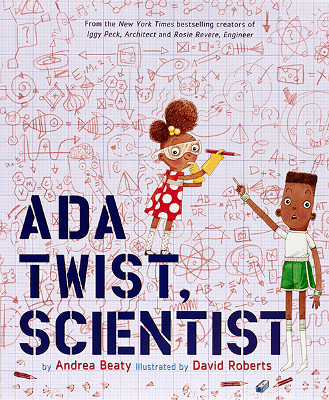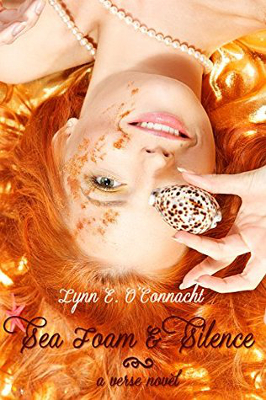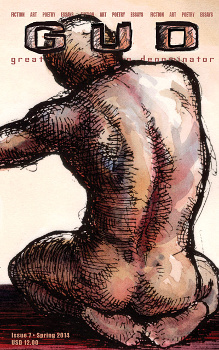 First Published: 6th September, 2016
First Published: 6th September, 2016
Genre: Children’s Contemporary Fiction / Picture Book
Available: Amazon.com | Amazon UK
Ada Marie Twist loves to explore things and ask questions. It might just be that she’s a scientist.
The story is in rhyming verse and broadly splits into two parts. The opening has Ada as a baby growing up. Her family notice that she loves to explore things, along with the chaos this causes. Once she starts talking, she has endless questions about the world. This introduces the general idea of the things that make a good scientist.
I liked that Ada doesn’t speak until she’s a toddler. Children don’t follow an exact timeline of development, and it’s treated as something to not worry about. However, the text does assume she will speak eventually. This could hit the wrong way for children who are non-verbal, in presenting speech as something that will happen for everyone.
This thread wouldn’t have sustained the whole book, but it then switches to the second part. Ada notices a really terrible smell, and decides to investigate what’s causing it. She doesn’t find the solution, but the evidence is there in the pictures and the answer can be guessed. This shows science doesn’t have all the answers and encourages readers to come up with the answer. However, it does mean the plot trails off rather than having a firm resolution. This may not work for some readers.
The artwork is done with watercolour, pen and ink. Graph paper and pencil elements are used for the backgrounds. The characters have great expressions. I especially like Ada’s sibling, who is often shown pointing at Ada when she’s made a mess.
This book is in a series of similar books about children with science and technology interests. There’s some reference to that, as they all go to the same school, but it isn’t needed to read the others before this one. It is very clear that it’s an American school, as Ada’s class is referred to by grade, so it could cause some confusion for children in other countries.
My biggest reservation happens outside the story, because there is an author’s note at the end. Ada’s namesakes are introduced: Ada Lovelace and Marie Curie. There’s also a comment that women have always been involved in science. This is true, but the book shows Ada as a black girl. The two named examples are not. I’d have liked to see at least one black woman named, even if she wasn’t Ada’s namesake. The obstacles Ada (and readers like her) will face are not only going to be about gender.
In general, I thought it was a cute book with a positive message about young girls interested in science. The way the plot ends is likely to work for some readers and not for others, so that’s worth keeping in mind. The family cat does face some peril at points in the story, but it’s stopped before the cat comes to any harm.
 Full Title: Spelling the Hours: Poetry Celebrating the Forgotten Others of Science and Technology
Full Title: Spelling the Hours: Poetry Celebrating the Forgotten Others of Science and Technology First Published: 9th June, 2016
First Published: 9th June, 2016 I have a poem in the new issue of
I have a poem in the new issue of  First Published: 9th February, 2016
First Published: 9th February, 2016